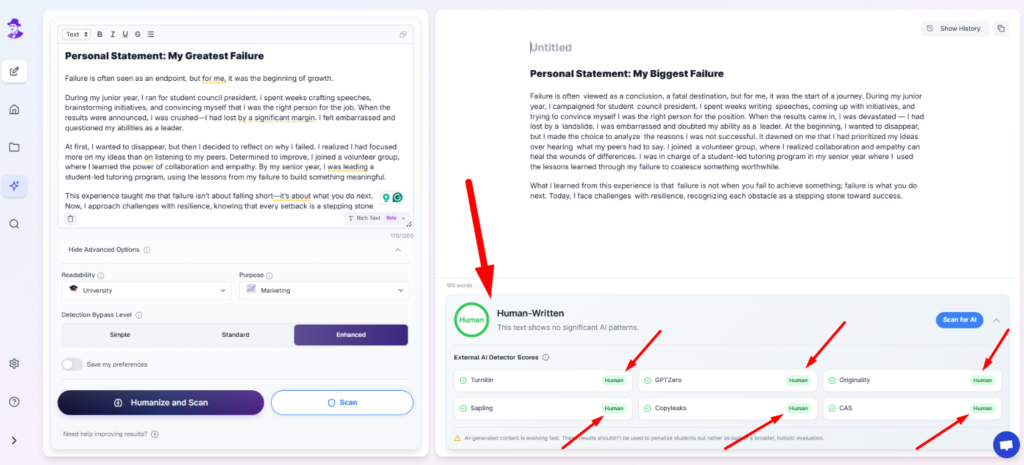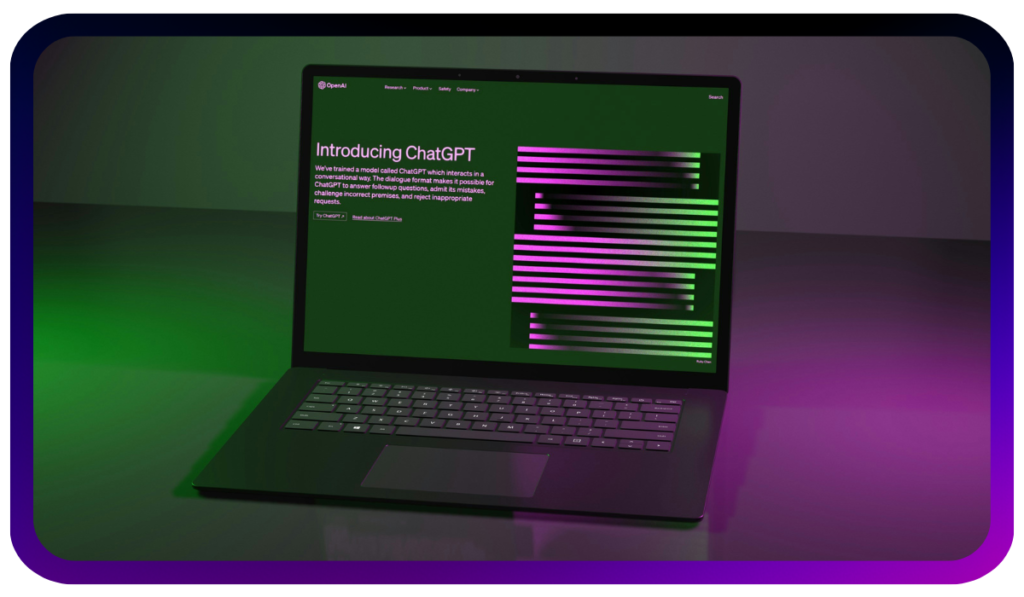Your essay can be falsely detected as AI. AI detectors sometimes misidentify human writing due to predictable phrasing, lack of personal voice, or overuse of rewording tools.
That’s where AI humanizers like Walter Writes AI can help. AI humanizer ensures your writing retains a natural flow, reducing the chances of false AI detection.
Let us explain in detail.
What Is AI Writing and How It Differs From Human Writing?
AI writing is content that is produced by using artificial intelligence, typically through the use of models such as ChatGPT, Jasper, or Copy. ai.
Whereas the text is structured and predictable, unlike any human writer, it lacks emotional depth and is full of place-holder-language without any lived experience.
Unlike human writing, which is based on creativity, critical thinking, and personal perspectives informed by lived experience.
Although AI tools can help develop and polish text, they frequently fail to maintain authenticity, leading to detection tools catching even human-written materials as AI produced.
Why Is My Essay Detected as AI When It’s Not?
If you are really not using AI but still your essay is getting detected as AI, then it’s because of false positives.
False AI detection is when a detection tool mistakenly identifies human-written content as coming from an AI.
AI detectors scan text for predictability, uniform sentence structures, and repetitive phrasing—all characteristics displayed by AI models.
Your essay writing might be “too good to be true” kind of writing, where AI detectors are thinking it was generated by AI.
If a writer has simple, formulaic sentences or writes with very accurate grammar, they may unintentionally trigger an AI flag.
Heavy AI-aided editing, such as spinning out whole sections of text using Grammarly and similar tools, can add to false positives.
AI detection tools can pick up patterns common in AI-generated text due to its constraints in writing styles.
How to Avoid AI Detection False Positives
Write with natural flow and sentence variation
AI-generated text is predictable and repetitive and will most definitely have patterns visible due to it being adherent to constraints. Avoiding this is as simple as varying sentence length and structure naturally.
Use short, punchy sentences, and longer, more convoluted ones. Avoid complex language and write in short and concise paragraphs that are easy to digest.
Add personal anecdotes and unique insights
AI is devoid of human experiences, emotions, and earthly insights. Adding personal anecdotes, opinions, or any industry expertise truly makes your content human.
By finding your own unique perspectives and injecting them into stories about something you know well — be it a personal experience, an anecdote, or just a funny observation — you can make your stage of writing, well, a stage of writing that will be difficult for AIs to pick up on.
Avoid excessive paraphrasing or rewording
Too much use of AI forced rewording tools, can make your language very awkward and text robotic.
Do not reword the content mechanically, get the meaning and rephrase as per your style. It retains its originality and yet has a seamless smooth flow to it.
Don’t rely too much on grammar checkers and AI-assisted edits
Grammarly and Hemingway are AI-powered tools that do a very good job of helping with grammar corrections, but if anyone becomes reliant on the rewritten copy their AI-powered systems provide, it is likely to sound synthetic.
Instead, use these tools lightly — for spelling and minor grammar fixes — all while leaving sentence restructuring and other edits to the human touch.
Use human-like phrasing instead of robotic patterns
AI-generated text tends to follow suspect structures, using the same phrases in a predictable way. Here are some tips on how to make the output sound more human:
- Use synonyms to diversify vocabulary.
- Ensure natural flow and transitions between ideas.
- Adopt a more conversational tone.
- Avoid writing in rigidly structured paragraphs; let ideas flow naturally.
- Incorporate rhetorical questions, idioms, or humor to break up the text and enhance authenticity.
How to Check Your Essay for AI Flags Before Submission
If you’re worried about your essay getting caught as AI-written, the best way to check is by using AI detection tools. AI detectors analyze your text and check if it resembles AI content.
An AI humanizer tool can help rewrite AI-produced text to sound more natural and personal. It improves readability and reduces the chances of AI detection tools flagging your essay.
Let’s take an example:
We generated a short essay using ChatGPT:

Now, let’s check the AI score of this short essay using Walter AI Detector and as expected, it’s showing AI.

If your essay gets flagged, don’t worry—there’s a way to fix it.
What to Do If Your Essay Is Wrongly Flagged as AI
You should refine your essay if it’s wrongly getting flagged as AI. One of the best ways to do this is by using an AI humanizer tool.
Let’s take our flagged essay and humanize it with Walter AI Humanizer.
In just one click on the “Humanize and Scan” button, we’ve successfully converted the text into a more human-like version. It is now ready to bypass any AI detector.

We know you might be thinking we’re biased. Why not try it yourself and see the results!
👉 Try Walter AI for free (300 words): https://app.walterwrites.ai/register
Conclusion
- Yes, AI detection tools can wrongly flag human-written essays as AI-generated.
- False positives happen due to structured phrasing, rigid sentence patterns, and excessive AI-assisted edits.
- To avoid AI flags, write with a natural flow, add personal insights, and use an AI humanizer tool like Walter AI to refine your text.









